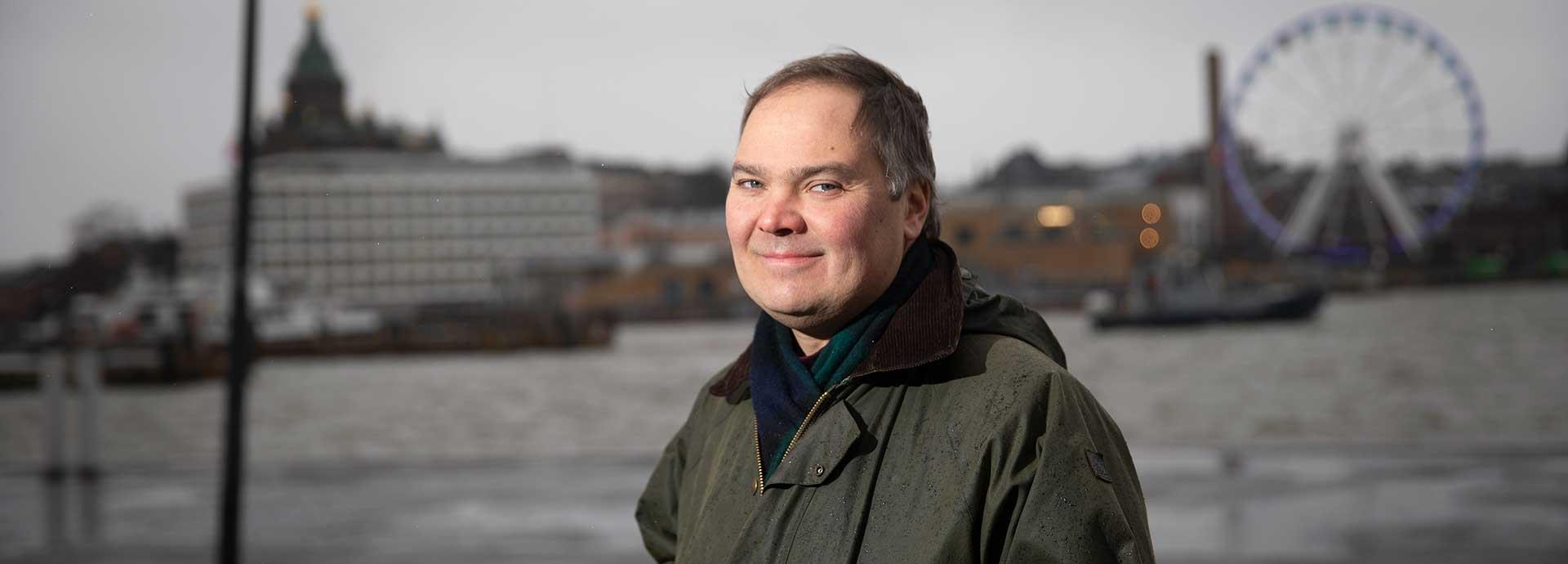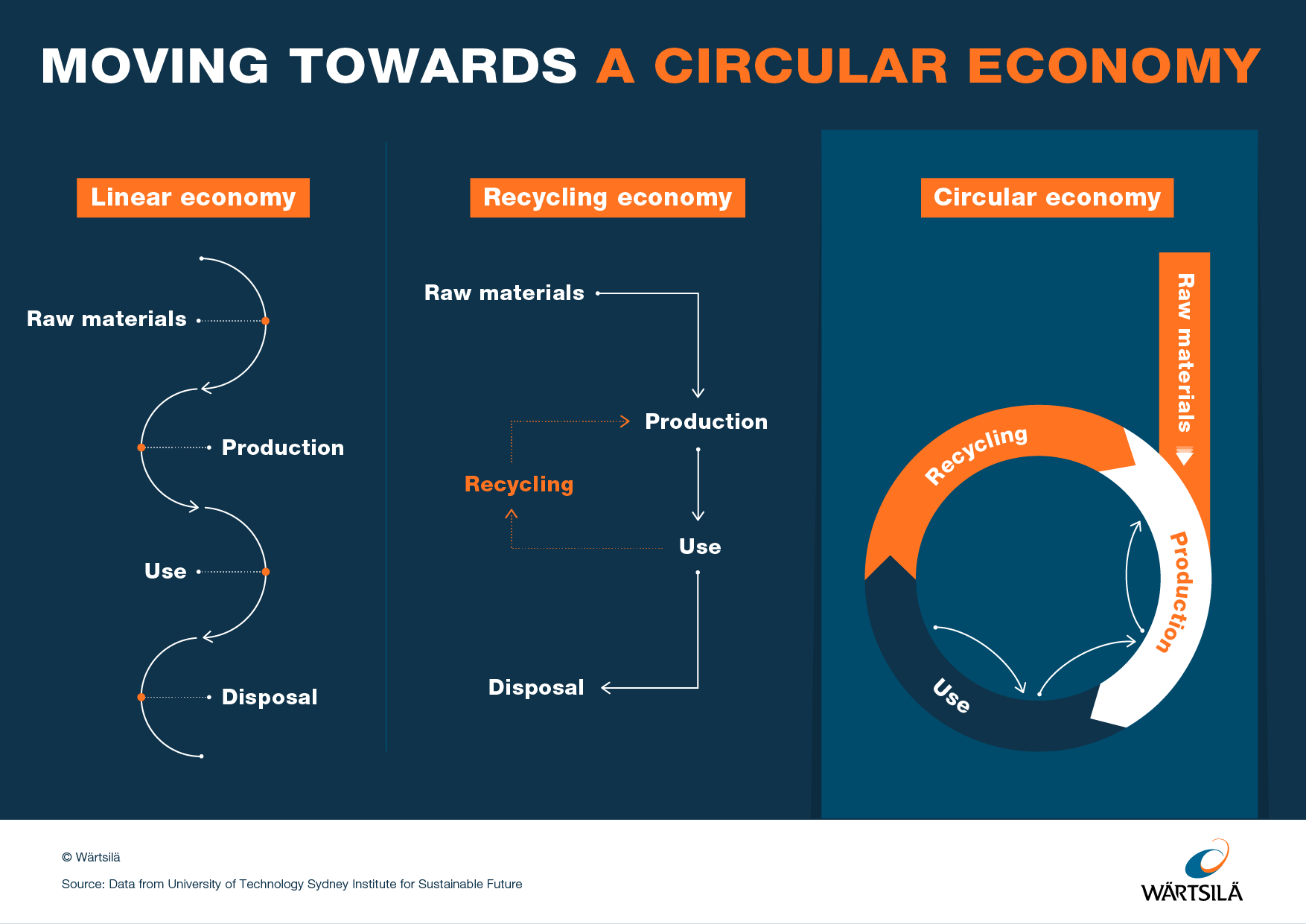

Vesa Marttinen, Director, Cruise & Ferry, Wärtsilä Marine Business, says that increasing material effectiveness is a way for the marine industry to leave a positive handprint on the path to a cleaner environment. Twentyfour7. caught up with him for an in-depth chat on the topic.
1. What does circularity mean?
Within the concept of sustainability, circularity is the preferred way of looking at how different industries and societies can approach their economic impact. Historically, we have had a throwaway approach, where material was produced, used and thrown away. Now, it’s already commonplace to speak about the recycling economy – introducing product back into production. This is far better than the linear model, but what is preferred is that even though we will always have a flow of new materials, there should be a circular economy where items are produced, used, recycled and produced again. That way we avoid disposing items into the environment. This is going to take time but moving in that direction is what is expected from sustainable businesses to look for in the future.
2. How does the concept of circularity impact the maritime economy?
We can divide the maritime business into four parts:
Leisure (this includes the cruise business, for example)
Harvesting of raw materials (oil and gas, offshore mining, fishing)
Logistics (shipping of food, energy, containers, bulk material)
Infrastructure (ferries, local shipping and defence)
All of them face a ‘license to operate’ issue because people do not like to have polluters in their space or emissions in their air and water. So, all maritime businesses face requirements from regulators. There are global actors like the Hong Kong convention and the IMO, and then you have local actors like the European Union and even more local, such as cities. Politicians too, are interested in this. Even so because the general public is interested in it.
In short, all segments of the maritime economy are facing pressure from both regulators and end consumers to be more environmentally friendly.
3. How does the marine industry business model need to change to promote a circular economy?
We have to start from a lifecycle approach. In corporate-speak, lifecycle typically means the middle of life, but the framework of a lifecycle is the beginning of life, middle of life, and end of life.
In the beginning of life, when we are developing these assets and operations, we usually say ‘built to last', but I prefer ‘designed to last'. This is to say that the assets will not wear out quickly – they can be used for a long time and then circled into something else in the manufacturing process. Then, we have to look at how we bring to the operations something that is conditioned and refurbished. The assembly and integration aspects are the last part of the beginning of the lifecycle stage.
The middle of the lifecycle stage includes the operation. Here we need to introduce a service-based model rather than a product-based model. This means we are less oriented towards asset ownership and more towards performance. This stage includes repair and maintenance work and long-term maintenance support. We should ask, at this point, if there are any opportunities for upgrades or ways in which we can improve the performance of the assets. Extending the lifetime increases the material effectiveness. We typically speak about energy effectiveness but increasing the material effectiveness means that we use fewer raw materials because we are extending the life of existing materials.
Then, finally comes the end of life part which comprises the decommissioning, scrapping and considering what can be recycled or upcycled back to the raw material process.
4. Is the maritime industry making progress in circularity?
We are doing a fairly good job bringing assets back to the material flow so that they can be used elsewhere. Today, I think most ship materials are reused. A lot of that is steel, but there are also interior materials and system components that can be reused. But the biggest win we have is the lifetime extension. We are extending the asset lifetime and through that, we will need less new material.
There’s a new regulation called the Energy Efficient Existing Ship Index (EEXSI) coming in, which will impact all ships currently in operation. It requires a minimum energy efficiency level per capacity mile. One way to tackle this is to convert ships by lengthening or by whatever means, making them larger and improving some of the systems so we can increase the capacity. This way we could cut down the total emissions of the maritime industry and at the same time use less materials.
5. Is there a business case that can be made for circularity?
There is a business case in this idea of lengthening. If you have a revenue potential of 100 percent, you enlarge your capacity by 50 percent, thereby making your earning potential 150 instead of 100 percent. With these lifetime extensions, you're actually not taking any huge risk because you’re making a decision today that can start paying back tomorrow.
There’s also the ‘license to operate' issue. If you don't start to do the right things, it might be that you are pushed out not by your existing competitors, but by somebody else who will disrupt your business and say, well, instead of dealing with sea logistics, I will choose a local manufacturer, so I do not need to transport goods so far from the customer.
6. Where does circularity fit in with other environmentally-friendly solutions?
There is no silver bullet, we need to have multiple solutions. And this would be one more solution in the portfolio, meaning that there's more activity for those ships in operation. Rather than only focusing on the new builds, which is mostly a conversation about what will happen in the future, with this kind of thinking, we can already start taking action today.
Other industries and companies are already promoting circularity. We have promised to support the cruise industry in developing and promoting its own circularity.
After the financial crisis, we stopped talking about total lifecycle environmental impact, but now is the time to bring that back on the agenda. We need to start asking ‘what is the total footprint of this activity’?
Circularity could be a way the maritime business could leave a positive 'handprint'.

